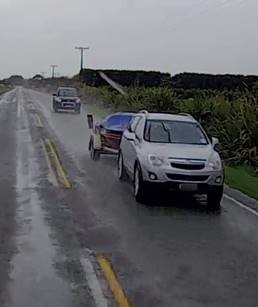Waka Kotahi NZ Transport Agency urges drivers to be aware of potentially hazardous ‘summer ice’ on South Island roads currently. Like the better-known black ice of freezing winter days, summer ice is often invisible to drivers but is just as slippery and hazardous.
“After an extended run of hot summer days followed by rain we start to experience slippery road surfaces, known as summer ice,” says Waka Kotahi Lower South Island Journey Manager Nicole Felts.
“Even a small amount of light rain can make the roads very slippery. In fact, it can be more hazardous than heavy rain because grime and exhaust particles that have built up on the road take longer to be washed away.
“The combination of light rain and summer grime creates a slippery film,” she says.
“We advise anyone who is driving in the rain or on a damp road over the coming days to take extreme care. The slippery film on the surface of the road is invisible, so don’t assume it’s not there just because you can’t see it.”

Miss Felts advises drivers to:
She also urged drivers to check the tread level and air pressure on their tyres.
“Properly inflated tyres with good treads are always a must for safe travel, but even more so in wet or slippery conditions.”
What causes summer ice and is there any solution?
In hot summer weather many road surfaces become “flushed” when the underlaying emulsion/bitumen seal layer breaks through to the surface. These smooth flushed areas are slippery when wet after rain or showers. The worst of these sites may have temporary warning signs in place to identify this hazard.
Bitumen bleeding is sometimes treated at the time with a chip layer or treated after summer with water-cutting to make the surface safe and restore traction until the road is fully rehabilitated.
Find out more about summer ice
Plan ahead for a safe, enjoyable journey. Keep up to date with: